Welcome to SCUBA News. I hope you find it useful. Any questions or comments email news@scubatravel.co.uk.
You can download a pdf version of SCUBA News here.
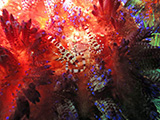 | Beneath Fijian Seas The best dive sites in Fiji include those around the islands of Taveuni and Namena. Deep water upwellings in the Somo Somo strait by Taveuni deliver food to the fish and invertebrates there - resulting in a proliferation of life.
Learn More…
|
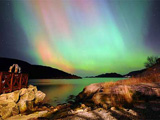 | Why Dive in Norway? For something different try Norway - quiet dive sites, exhilarating drifts in some of the strongest currents in the world, great wreck dives and beautiful scenery.
Learn More…
|
|
|
 | Dominica - Unlike the rest of the Caribbean The Commonwealth of Dominica is mountainous, volcanic and very beautiful. Yours will often be the only dive boat at a dive site. Dominica's reefs are rocky: there are lots of corals here but they sit on boulders and walls rather than on reefs.
Learn More…
|
|
Liveaboard Deals
Save $1400 on Indo Aggressor Liveaboard
Dive the Forgotten Islands - Kai and Tanimbar
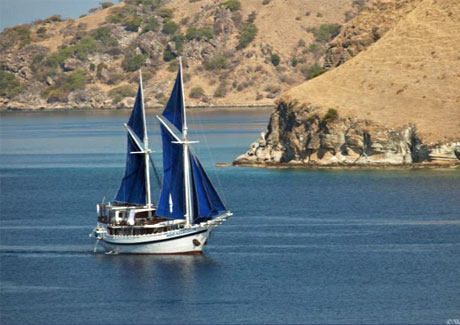
For adventure, unknown dive sites and spectacular scenery off the beaten track
Learn More…
Letters
Diving Bali
Hi, I am a certified open water diver, I plan to visit Bali with friends in mid to end November. Please tell me if diving then is a good season to dive then. If yes, which dive sites would be best to select. Thanks!
Ms Preet Shah
Yes, November is a good time to dive Bali. The wreck of the Liberty in Bali has been voted one of the top ten dive sites in the world, so that would be one to look at. Other highlights include the reef manta rays of Nusa Penida and the macro marine life of Tulamben. More details of Bali diving are on the SCUBA Travel web site .
Anyone with any other recommendations send them to news@scubatravel.co.uk and we'll pass your message on - thanks!
Many animals use venom to protect themselves from predators and to catch prey. Some, like jellyfish, have tentacles, while others, like sea snakes, use fangs to inject their prey with venomous toxins.
For a long time scientists believed that an animal's venom was consistent over time: once a venomous creature, always a venomous creature. However, through a close study of sea anemones, scientists have found that animals change their venom several times over the course of a lifetime, adapting the potency and recipe of their venom to suit changing predators and aquatic environments.
In a study published in eLife Science Magazine, Dr Yehu Moran of Hebrew University has and his team describe their spectacular findings. They studied the Nematostella sea anemones. These begin their life as tiny larvae and grow into animals measuring several inches long. While in the larvae stage, the Nematostella fall prey to larger fish but once mature they become predators themselves, catching shrimp and small fish with their venomous tentacles.

Nematostella
While in the larvae stage, sea anemones produce uniquely potent venom that causes predators to immediately spit them out. Later on, when the sea anemones grow big and become predators themselves, their venom adapts to their new lifestyle by producing a different kind of toxin, one best suited to catch small fish and shrimp. Over the course of a lifetime, as the Nematostella's diet changes and they move from one aquatic region to another, they adapt their venom to suit their new needs and environment.
Practical Uses of the Research
Venom is often studied because the compounds it contains have the potential to be developed into new drugs.
The jellyfish and coral relatives of Nematostella may also produce different venoms at different life stages. This means that there are likely to be many toxins that we have not yet identified in these animals. As some jellyfish venoms are very active on humans, and reef corals have a pivotal role in ocean ecology, further research into the venoms produced at different life stages could help us to understand and preserve marine ecosystems, as well as having medical benefits.
Read the full story here
Our round up of the best underwater news stories of the past month. For breaking news see our Twitter page or RSS feed
 | Best places to scuba dive in March
March is a great month for shark diving, both in the northern and southern hemisphere.
|
|
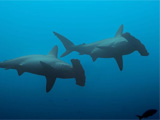 | Samoa declares itself a shark sanctuary
"Sharks play a critical role in maintaining healthy ocean ecosystems. The multi million dollar shark dive industry is just one example demonstrating that sharks are more valuable alive in our oceans rather than dead on foreign vessels" said Samoa's Prime Minister
|
|
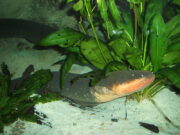 | Electric eel inspires new power source
Could the electric eel inspire a self-charging power source for implantable devices such as heart pacemakers, sensors, drug delivery pumps or prosthetics?
|
|
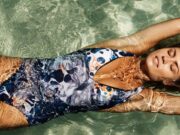 | Fashion industry on board with reef conservation
In response to huge consumer demand, ethical fashion is on the rise. Although perhaps unlikely partners at first glance, the fashion industry is teaming up with conservationists to help protect the largest reef on the planet: The Great Barrier Reef.
|
|
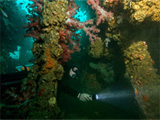 | Britain's first WWI merchant wreck set to become marine reserve after diver buys it for 1 pound
Steve Dover discovered the wreck of the merchant ship the City of Winchester while scuba diving off the coast of Oman's Hallaniyat Islands.
|
| |
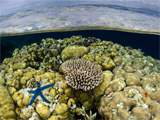 | When It Comes to Climate Change, the Ocean Never Forgets
Climate scientists are investigating the extent to which warming, acidification and other effects can be undone.
|
|
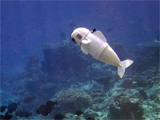 | Nintendo-controlled fish flap its fins in Fiji's Rainbow Reef
It looks and moves like a real fish, flapping its tail from side to side. But this fish is controlled by a human diver via a waterproofed Super Nintendo controller and an ultrasound transmitter.
|
|
| 50 Best dives in Indonesia
From well known dives in Bali, Komodo and Raja Ampat, to the top sites in the more remote, much less visited parts of the country like Mapia, Maputi and Manuk - new book covers the pick of Indonesia's dive sites.
|
SCUBA News is licensed under a Creative Commons Attribution 4.0 Unported License. This means we are happy for you to reuse our material for both commercial and non-commercial use as long as you: credit the name of the author, link back to the SCUBA Travel website and say if you have made any changes. Some of the photos though, might be copyright the photographer. If in doubt please get in touch.
Photo credits: Tim Nicholson, Jill Studholme
Previous editions of SCUBA News are archived at http://www.scubatravel.co.uk/news.html
SUBSCRIBING AND UNSUBSCRIBING
Visit Unsubscribe and add or remove your e-mail address. To change whether your receive the newsletter in text or HTML (with pictures) format visit this link
ADVERTISING
Should you wish to advertise in SCUBA News, please see the special offers at
http://www.scubatravel.co.uk/newsad.html
Other advertising opportunities are at
http://www.scubatravel.co.uk/advertising.html
CONTACTING THE EDITOR
Please send your letters or press releases to:
Jill Studholme
SCUBA News
The Cliff
Upper Mayfield
DE6 2HR
UK
news@scubatravel.co.uk
PUBLISHER
SCUBA Travel Ltd, 5 Loxford Court, Hulme, Manchester, M15 6AF, UK
No comments:
Post a Comment